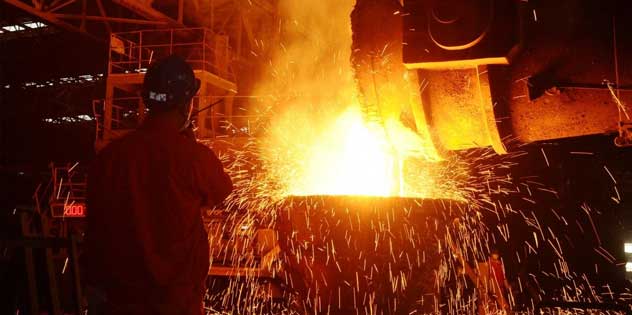Blog Detail


The Role of Metallurgy in Today's Society
19-05-2019

We live in a material world. Today, it is the role of the materials engineer to study, develop, design and operate processes that transform raw materials into useful engineering products intended to improve the quality of our lives. The industrial revolution placed metals to the fore of technology, and have become the very foundation of our modern society and its growth. One cannot envision a life in which electronics, transportation systems, buildings, and machines are not part of our daily lives.
What is Metallurgy?
Metallurgy is the study and understanding of the physical and chemical behavior of metallic elements, their compounds, and alloys and falls under the umbrella of Materials Sciences and Engineering. Metals and mineral products surround us everywhere – at home, on our way to and from work, and in our offices or factories. They form a very essential part of manufacturing modern aircraft, vehicles of transportation (automobiles, trains, ships) and recreational vehicles; buildings; implantable devices; cutlery and cookware; coins and jewelry; firearms; and musical instruments. While threats abound from alternative material choices, metals continue to be at the forefront and the only choice for many industrial applications.
Apart from developing new materials and processes to build this machinery and equipment, testing new theories and models to understand them are also the focal points of today’s metallurgist. We have the means to measure properties at the macro, micro, nano, and atomic scales, giving us unprecedented access to fuel new developments. The strong dependence of our society on a variety of metals lays the foundation for professions in metallurgical engineering in the modern world. Apart from producing metal products, the metallurgical engineer must also be able to determine the cause of defects in metals and prescribe possible solutions.
Metallurgy Contribution towards GDP
The rise in population, growth in the economy, urbanization and the increasing domestic requirements, has created a strong demand for minerals and metals. In the last few years, India has seen significant growth in minerals with the government granting leases for longer durations of 20 to 30 years.
The Mining Sector’s contribution to GDP is US$ 21.86 billion. In Fiscal Year 2016 (FY16), India had 1,878 operative mines. For global players, India is a big market for mineral resources, as metals and power demand is expected to have robust growth in the long term. India ranked 4th globally in terms of iron ore production and was the 3rd largest producer of crude steel in the Asia-Pacific region in 2015. In FY16, production was expected to reach 140 million tonnes of iron ore. India was 3rd in total and the finished steel production (alloy + non-alloy) in India was estimated to reach 90 million tonnes in FY16.
Currently, aluminum is the 2nd most used metal in the world after steel and the 3rd most available element in the earth, constituting almost 7.3 % by mass. At present, aluminum is the fastest-growing non-ferrous metal and its production volume falls second to the demand for steel. Domestically, the demand and consumption of aluminum was projected to rise to about 3 million tonnes by 2017 from nearly 1.71 million tonnes now. Also, copper stands 3rd in consumption after steel and aluminum. India is also among the top five zinc mining countries globally.
Research and Innovation in Metallurgy by 2020
- Development of high strength and high conductivity alloys for non-rare-earth induction motors for use in EV traction and elsewhere in the vehicle (high-efficiency motors for blowers, window-lifting, convenience features, windscreen wipers, fuel pumps, starter/generators).
- Materials with high rigidity and stiffness for example to prevent buckling of slender elements, e.g. foam materials could be considered to attain higher stiffness.
- Innovation can be situated on the level of the development of fire-safe steel using the inclusion of carbides.
- The use of materials technologies to manage bio-pathogens/microbes, such as antimicrobial copper.
- New composites like highly conducting carbon nanotubes embedded in Cu (copper) wires can play an important role both in the economy and in the efficiency of the electrical energy transport.
- In the case of marine and offshore applications, new corrosion protection systems can be provided by metallurgical solutions.
We at Jain (Deemed-to-be University) offers B.Tech in Metallurgical and Materials Engineering and M.Tech in Materials Engineering with industry-aligned curriculum and experienced faculty with excellent infrastructure and placement opportunities.